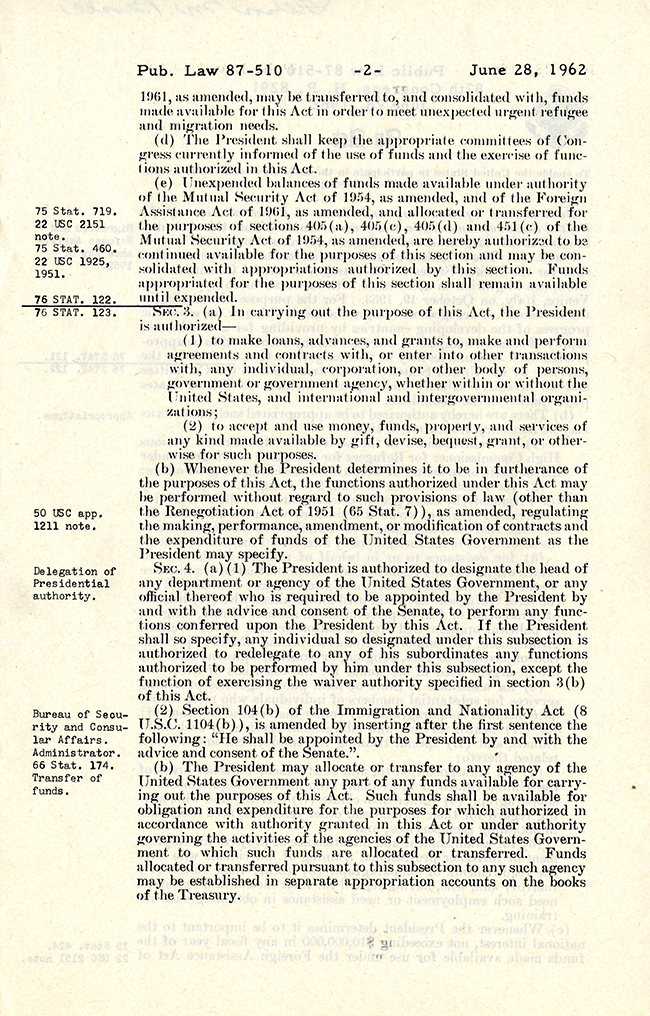The Cuban Experience in Florida: Revolution and Exodus
Migration and Refugee Assistance Act of 1962
Hundreds of thousands of Cuban refugees arrived in Florida in the early 1960s. The mass exodus following the Revolution of 1959 prompted changes in U.S. immigration policy, especially federal assistance available to political refugees.
On June 28, 1962, the United States Congress approved the Migration and Refugee Assistance Act (MRA). The MRA expanded existing programs and funding for refugee assistance. The act authorized Congress to appropriate “such amounts as may be necessary from time to time” to provide assistance to refugees, particularly those fleeing from regions under the influence of the Soviet Union. By providing assistance to refugees, the U.S. hoped to “contribute to the defense [,] the security [and to] the foreign policy interests of the United States.”
Under the MRA of 1962, a refugee was defined as a non-U.S. citizen who fled their home country “because of persecution or fear of persecution on account of race, religion, or political opinion.” The extension of assistance to refugees who met these standards served as an important symbolic weapon in the Cold War. In combination with other programs, the MRA aimed to improve the image of the United States in the world.

 Listen: The Folk Program
Listen: The Folk Program Enlarge this image
Enlarge this image



